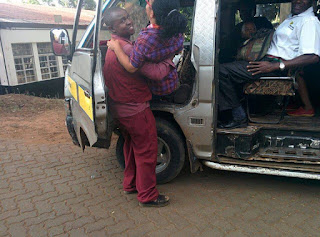Patients with facial paralysis as a result of muscular dystrophy may benefit from new research conducted at Johns Hopkins University School of Medicine. Kofi Boahene, MD, a facial plastic and reconstructive surgeon in the Department of Otolaryngology-Head and Neck Surgery at Hopkins, led a study that found hyaluronic acid injections are useful in rejuvenating lip strength in patients with muscular dystrophy.
“It’s a very large problem that can occur because of stroke, Bell’s Palsy, muscular dystrophy, trauma and birth defects,” stated Dr. Boahene, in a news release from Hopkins. Dr. Boahene worked with colleagues from Hopkins and Stanford to author the study, “Quantifying Labial Strength and Function in Facial Paralysis: Effect of Targeted Lip Injection Augmentation,” which was published in JAMA Facial Plastic Surgery.
The goal was to help patients who have lost lip control and consequently struggle with drooling, eating and drinking, making certain speech sounds such as “b” and “p,” and self image. With a bit of serendipity, Dr. Boahene found that hyaluronic acid injections in one of his patients with then-undiagnosed muscular dystrophy improved the strength of her lips and enhanced her articulation.
Accordingly, Dr. Boahene and collaborators initiated a study that recruited three patients with muscular dystrophy who had facial paralysis on both sides of the mouth, along with 22 other patients who had paralysis evident on only one side of the mouth. At the time of treatment, the doctors asked the patients to purse and blow air through their lips. Wherever the doctors noted weak points on the patients’ lips, they administered an injection of hyaluronic acid.
To determine the efficacy of treatment, the doctors compared the strength of patients’ lips, estimated from pressure readings, before and after treatment. Patients with muscular dystrophy demonstrated the most significant improvement, although on-average there was a benefit across all patient population. Lip strength of muscular dystrophy patients increased six- to sevenfold, and lip strength of the remaining patients increased approximately 1.4-fold.
Additionally, a speech therapist determined that patients had markedly improved in their ability to speak and eat and drink without spillage.
Dr. Boahene explained the reason for the benefit by making an analogy to nature. “To maintain structure, plants fill their leaves and stems with water,” said Dr. Boahene. “It’s a crude analogy, but injecting the lips with hyaluronic acid works in much the same way. It tones the tissue surrounding the muscle.”
The typical lifetime of seeing a benefit from hyaluronic acid injections for cosmetic purposes is approximately a year. The lasting effects for the patients in this study have not yet been established, but this may be a point to consider in another future study. Already, the research team is planning a study with 100 patients. So far, there have been no marked side effects, only improvements.
Cost-wise, receiving hyaluronic acid injections can be up to $2,000 for cosmetic purposes. If injections are demonstrated to have a therapeutic benefit, insurance companies might make an exception to cover the bill. As a minimally-invasive outpatient procedure, lip injections may be a valuable addition to help patients with facial paralysis due to muscular dystrophy.
Visit: musculardystrophynews.com for more updates on research and breakthroughs.





